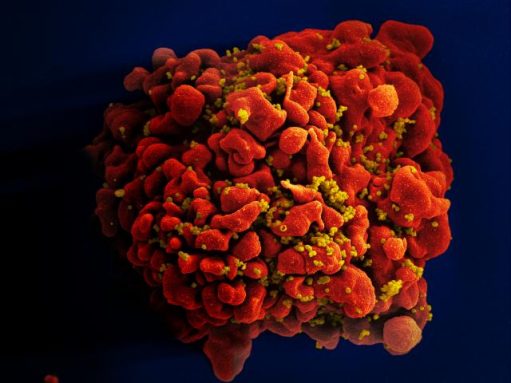The AIDS virus that vanished
Strong medicine may have rid a newborn of deadly HIV

A toddler in Mississippi has just made history. Doctors report that a combination of medicines appears to have cured the child of a deadly virus. The girl was born with HIV, the virus that causes AIDS. If her infection doesn’t return, researchers say this would be the first known case where drugs wiped out HIV.
Ordinarily, drugs can keep HIV from growing quickly and overwhelming the body’s ability to control it. But in the young girl, the virus appears to have all but disappeared. Virus expert Deborah Persaud of Johns Hopkins University in Baltimore described the child’s apparent cure on March 3 in Atlanta at a meeting on viruses. Her team credits the child’s apparent cure to early and prolonged treatment with three HIV-fighting drugs. Doctors began treatment when the girl was just 30 hours old.
Babies born with HIV get the virus from infected mothers. During pregnancy, those women usually take medicine to limit the risk that they will pass the virus to their unborn baby. But in this case, the mother did not know she was infected. So she hadn’t taken any anti-HIV drugs. Knowing that, the doctor who took care of her newborn immediately ordered higher-than-usual doses of medicine for the baby. And the treatment lasted far longer than usual.
Doctors usually give HIV-infected newborns two drugs for one week, and then continue one of those drugs for another five weeks. The Mississippi baby received all three drugs for 18 months.
Blood tests turned up HIV in the baby girl’s blood when she was 7, 12 and 20 days old. On day 29, that changed. Her blood suddenly tested negative. Two years later, more tests showed that her blood only contained broken-up bits of HIV, but no infectious virus.
Still, questions linger. Scientists don’t know, for instance, whether the virus had started invading and killing cells in the baby’s immune system during her first month of life. Perhaps the baby wasn’t even truly infected, they say. She may have just carried residues of her mom’s infection.
“There’s no question the baby was exposed,” Daniel Kuritzkes told Science News. “It’s a little less easy to determine whether the child was actually infected.” Kuritzkes studies viruses at Harvard Medical School and Brigham and Women’s Hospital in Boston. He wasn’t involved in the case.
But the answer may not matter, Kuritzkes adds. The important thing is that doctors may have found a way to knock out HIV in newborns.
HIV stands for human immunodeficiency virus. This dangerous germ kills cells in the body’s immune system that defend against infection. A person with a crippled immune system is unable to fight off infections, even from germs that don’t usually make people sick. This special susceptibility to disease is called AIDS, or acquired Immune deficiency syndrome.” Since AIDS was first diagnosed in 1981, HIV has killed more than 600,000 people.
Power Words
virus A tiny molecule made of a protein shell that encloses genetic information. A virus can live and multiply only in the living cells of a host organism, such as humans.
HIV (Human Immunodeficiency Virus) A potentially deadly virus that attacks cells in the body’s immune system and causes acquired immune deficiency syndrome, or AIDS.
AIDS (Acquired Immune Deficiency Syndrome) A disease that weakens a body’s immune system, greatly lowering resistance to infections and some cancers.
immunity The ability of an organism to resist a particular infection or poison by
producing and releasing special protective cells.







